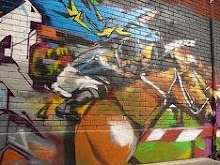* * *

Laughing In The Hills by Bill Barich was published in 1980 to much acclaim. Though this is far from a timely review of his non-fiction masterpiece, there is something to be said for how a book ages and Barich's account still resonates 30 years after the fact.
The novel begins with a blunt statement of fact - Barich's mother is suffering through terminal cancer and the family is struggling to deal with the painful decline of her health. It's a hook that all of us can immediately be caught on, as there is no more painful or personal a struggle than coping with loss. The unlikely crutch of horse-racing serves to put joy, anticipation and hope into a situation where none can really exist as the family gathers around the radio to listen to race calls from far off tracks.
In mourning, Barich makes his way to Golden Gate fields on a journey to help him find peace with his loss by moving into a motel near the track to write a book and make a living on the grift through handicapping. Barich's story evolves into historical anecdotes of Golden Gate intermingled with stories of his trips to the grandstand and down the backstretch.
Did you know that in 1949, Willie Shoemaker broke his maiden at Golden Gate on Shafter V? Other stories, take you into sky high accounts of Hirsh Jacobs and his $1500 purchase of Stymie who went on to win nearly a million in his career. Jacobs' story being a peak in that the stock at Golden Gate was generally not of this quality and as Barich makes friends on the backstretch, the reader finds an attachment to the gritty trainers and grooms grinding out a living with uncertain horses. Barich's prose turns names into characters and you come to care deeply for the plight of those that care for the horses. A story of backstretch hands and jockeys playing an impromptu game of baseball on the turf course goes a long way in developing a connection to the personality and force behind otherwise inconsequential names listed above a horse on the Form.
Some of the more entertaining portions of the book revolve around the mental tug of war that is handicapping. Barich's mind weaves a murky trail of the usual suspects of finding a winner, his thought process premised by his own in-depth survey of the Pacific Meet. Barich's study provided that front runners won 30 percent of sprints at Golden Gate. At races over a mile, horses running outward of post six were at a disadvantage, while in a sprint a surprising stat was raised that horses slotted at post five and six had a distinct advantage over horses inside of them. As you can imagine, Barich's results were not as precise a statistical revelation. A front running donkey won't beat a classy closer regardless of post position. Still, the applied logic and resulting charts are interesting reading.
Eventually Barich would come to the conclusion that proper handicapping is a patient man's game. The right horse, worked by the right trainer using the right jockey at exactly the right time provides a percentage opportunity to make some money - but not much. Despite the revelation, the pull of wagering on each race is more tempting than the patient rumbling of the sensible inner voice and Barich continually veers off course. Still, horse racing fans will believe in Barich's theories and devour his charts and tinkering with handicapping. It's a game where anything is possible and all of us are searching for answers as much as Barich is - both in racing and in life.
While I found myself drawn into the writer's life at Golden Gate, Barich also spends much of the book theorizing on Tesio's views on breeding, the Renaissance and on Barich's own college years spent in Italy. The passages are exquisitely written asides full of descriptives and of a literary bent. While interesting, they distracted me from the fascinating characters of Golden Gate racing who I longed to know more about.
For all the flowery prose within the pages, it is the simple human stories that are most memorable and provide the reader the stamina to stay the course. The story of trainer Debbie Thomas, heartbroken when her favourite horse Bushel Ruler was claimed, breaking into the new trainer's barn to check on her friend was touching, to a tearful acknowledgment that, "When he (Bushel Ruler) saw her coming, he stuck his head out of his stall and whinnied and nickered, just as he had always done in the past."
At its best, Laughing In The Hills is as perfect as the story above - simple, heartfelt and full of raw emotion.












2 comments:
What a wonderful book this is! You might also enjoy Barich's look at the Irish racing scene: A Fine Place to Daydream. (I posted my impressions of it over on Turf Luck last St. Paddy's Day.)
Thank you for your comments. I took a stroll through your blog and found your "Books" section intriguing. I will be visiting there to add to my winter reading list!
Here's a link for those reading this comment.
http://turfluck.blogspot.com/search/label/books
Post a Comment